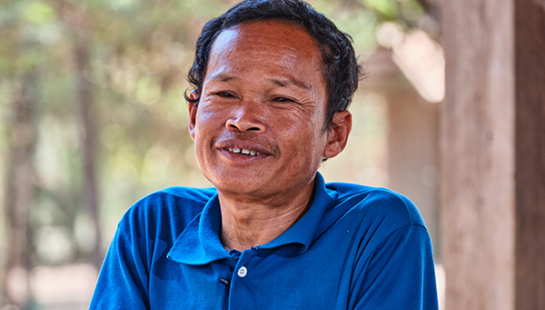Whenever the rain started in Subhuja’s village, she’d stay inside her house terrified—frozen in fear at the thought of a catastrophic flood. The 15-year-old lives in one of the most disaster-affected districts of Bangladesh where tropical cyclones, storm surges, and flash floods are common.
Subhuja is not alone.
Out of the 1.5 billion people at risk of being impacted by floods, 89 per cent are from low and middle-income countries, where poverty is likely to increase vulnerability.
Floods obviously spare no one in their path, but those with boats stand a better chance of survival. Evacuation to higher ground favours the able-bodied and healthy. And if you’ve managed to build your house on stilts and stockpile emergency food, you’ve some hope of holding on to your home, your livelihood, and your life during seasonal flooding.
Preparation Is Critical
Immediate aid responses to disasters are often swift and generous, but the sustained work of helping communities prepare for disasters can take a backseat. Ensuring all people can prepare for disaster is an act of justice. When access to resources is limited, then it’s the most vulnerable who disproportionately bear the impacts when disaster strikes.
The COVID pandemic starkly demonstrated this truth, reversing two decades of development gains within months of its onset in vulnerable communities. Similar vulnerabilities persist in the face of natural hazards and environmental crises, and threaten to undermine the goal of eradicating poverty by 2030.
‘Poverty undermines preparedness,’ said Kelsea Clingeleffer, Disaster Management Coordinator at Baptist World Aid, ‘and a lack of preparedness perpetuates poverty. Interrupting this cycle from both sides is critical to putting power in the hands of disaster-prone communities.’
Poverty undermines preparedness, and a lack of preparedness perpetuates poverty.
Poverty Impacts Preparedness
Poverty constructs numerous barriers to disaster preparedness. Insecure housing, inadequate infrastructure, and limited access to essential health, sanitation and communication services heighten vulnerability and risk.
Preparedness can help reduce vulnerability, which in turn can reduce poverty in communities. To prepare for disasters such as drought, our Partners in Kenya help communities build water infrastructure, plant drought resistant crops, and line rivers with new trees to prevent erosion of the riverbanks. They also facilitate information sharing sessions so communities, including children and young people, can learn about the risks in their communities and work together to mitigate them.
But while poverty exacerbates the damage a disaster causes, the inverse is also true.
Building Resilient Communities
For this reason, community development programs are themselves a form of disaster preparation. When our Partners help people diversify their livelihoods, family incomes are protected in a crisis. By increasing the financial sustainability of a family through education, business development and savings, their housing and access to health care improves, and so does their resilience after a disaster.
Before joining our Partner’s Child and Youth project, Subhuja had little understanding of natural disasters and how to respond to them. Now, along with other young volunteers, she’s received training in cyclone preparedness, fire safety, and first aid. As members of the Community Emergency Response Team, the youth in her community monitor disaster threats and respond, in age-appropriate ways, when disaster strikes.
‘Previously, I was scared of cyclones, floods and other disasters,’ Subhuja said. ‘But now, when it rains or there is risk of floods, I come out from my house not only to save my family and belongings, but also to save my neighbours and members of the community. I never thought that I would ever carry out such brave work. I did not have such courage. It was only after I underwent training and became a volunteer.’
I never thought that I would ever carry out such brave work . . . It was only after I underwent training and became a volunteer.
Our Partner is supporting many locally-led groups in Subhuja’s community that work together to strengthen livelihoods, promote child rights and education, and develop local infrastructure—alongside disaster preparation. As our world grapples with escalating threats, building resilience through education, infrastructure, and preparedness emerges as a potent tool against the injustice of poverty, safeguarding both present and future generations.



 Heather Keith,
Heather Keith,

 Sophia Russell,
Sophia Russell,